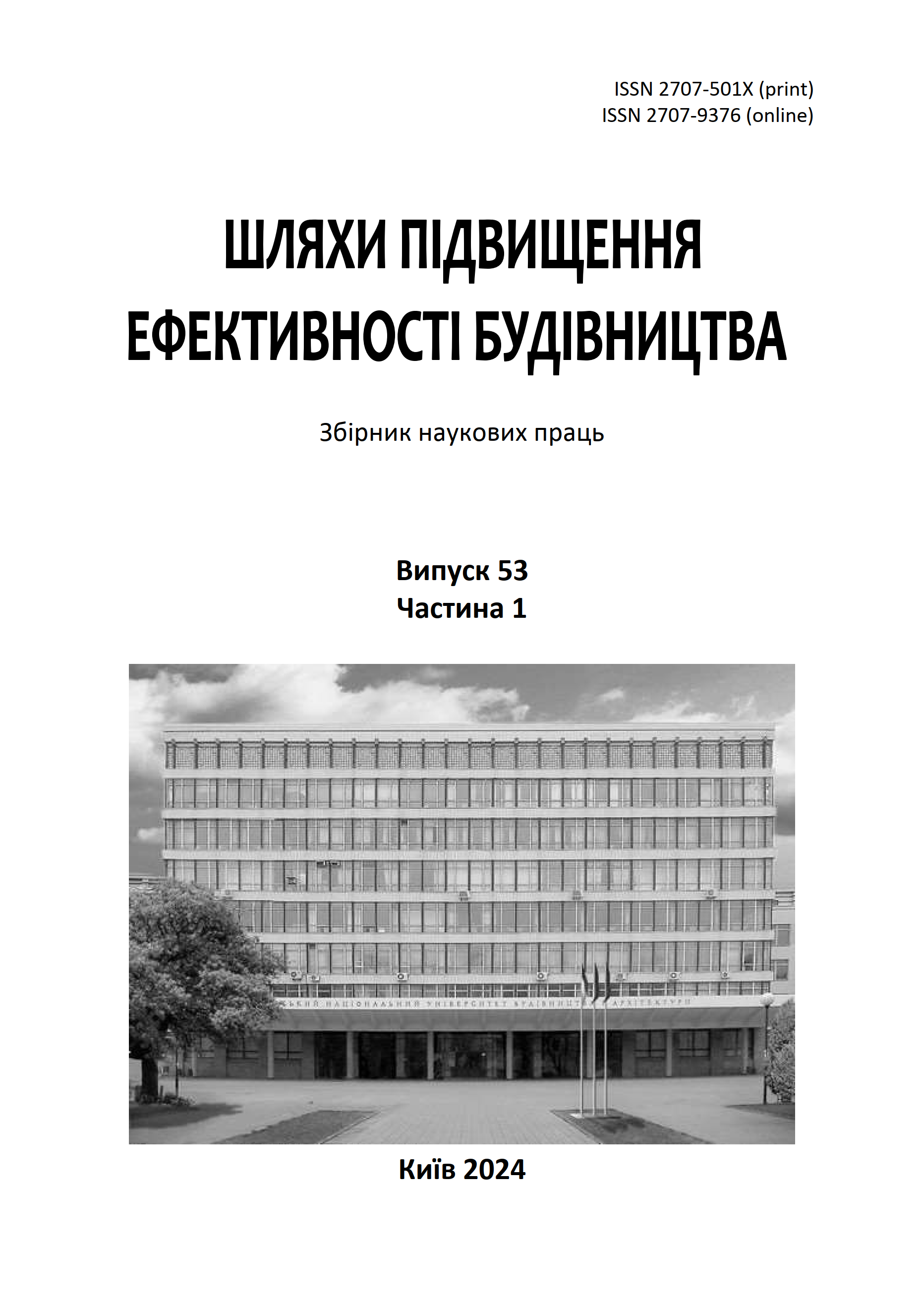Optimization of organizational and technological parameters of the construction of civil buildings
DOI:
https://doi.org/10.32347/2707-501x.2024.53(1).122-130Keywords:
construction, organizational and technological parameters, mathematical modeling, experiment planning, limitations, resourcesAbstract
The article provides solutions for optimizing organizational and technological solutions for the construction of civil buildings. The article formulates the goal and describes the research methodology. Optimizing the organizational parameters of construction requires a comprehensive approach, which will include the implementation of modern technologies, effective management of resources and constant improvement of technological processes. The use of such methods allows not only to increase the productivity and quality of work, but also to reduce costs and time spent, while ensuring the successful completion of construction objects. The search and identification of factors made it possible to systematize them: the influence of compactness of the construction site; factors complicating the transport of structures; factors complicating the consolidation of constructions; factors complicating the installation of structures; factors of work performance technology; factors describing the constructive and planning solution of buildings. Another network model may include options for completing the construction of the facility. The use of various models ensures high efficiency of the management system based on organizational and technological factors. However, a large volume of initial and current information requires careful organization of the database structure and intensive use of computer technologies. Computerization of the management process based on organizational and technological factors, as well as design, supply, financing and other processes requires clear formalization and creation of information technology. One of the possible directions of formalization of management technologies is the construction of economic-mathematical models, on the basis of which the management system is formed.
References
Анін В.І., Арутюнян І.А., Арутюнян Є.Е., Банах В.А. та ін. Науково-теоретична платформа активізації та розвитку будівництва України: монографія / за ред. І.А. Арутюнян. Запоріжжя: ЗНУ, 2020. 212 с. https://dspace.znu.edu.ua/jspui/handle/12345/12031
Арутюнян І.А., Коваленко М.Г. Детерміновані та недерміновані фактори, що впливають на вихідіні умови задач оптимізаційно-організаційних процесів будівельного виробництва. Шляхи підвищення ефективності будівництва в умовах формування ринкових відносин. 2020. № 43. C. 59-66. DOI: https://doi.org/10.32347/2707-501x.2020.43.59-66.
Данкевич Н.О. Формування системи вибору оптимального варіанту організаційно-технологічних рішень в умовах невизначеності та динамічності з дотриманням принципів саморегуляції. Мости та тунелі: теорія, дослідження, практика. 2020. № 18. C. 50-57. URL: http://bttrp.diit.edu.ua/article/view/217698.
ДБН А.3.1-5:2016. Організація будівельного виробництва. [Чинний від 2016-05-05]. Київ, Мінрегіон України, 2016. 51с.
ДБН А.3.1-5-2016. Управління, організація і технологія. Організація будівельного виробництва. [Чинний від 2016–05–05]. Київ, 2016. 52 с.
Осипова А.О. Класифікація факторів, що впливають на вибір організаційно-технологічних рішень ревіталізації процесів будівельного виробництва. Містобудування та територіальне планування: Вип. 69. 2019. С. 304–309.
Данкевич Н.О. Підвищення ефективності організаційних рішень у складі проекту організації будівництва. Мости та тунелі: теорія, дослідження, практика. 2019. Вип. 16.С. 38-43. DOI: https://doi.org/10.15802/bttrp2019/189439
Григоровський П.Є. та ін. Інформаційне моделювання організаційно-технологічних рішень інструментальних вимірювань при створенні та утриманні будівельних об’єктів. Будівельне виробництво, 2019. № 67. С. 7–16.
Шумаков І.В., Мікаутадзе Р.І., Ляхов І.І. Оптимізаційні тенденції у прогнозуванні тривалості будівництва. Науковий вісник будівництва. 2018. №1(91). С. 115–121.
Тугай О.А., Франчук О.А. Регламент організаційних заходів, щодо забезпечення експлуатаційної придатності об’єкту. Шляхи підвищення ефективності будівництва в умовах формування ринкових відносин. 2018. Вип. 35. С. 154-160. DOI: https://doi.org/10.32347/2707-501x.2018.35
Тугай О.А., Поколенко В.О., Єсипенко А.Д., Дубинка О.В. Загальний план і фази впровадження БІМ-концепції у будівельній галузі. Шляхи підвищення ефективності б удівництва в умовах формування ринкових відносин. вип. 47 (1), технічний, 2021. С. 3-14. DOI: https://doi.org/10.32347/2707-501x.2021.47(1)
Arutiunian I., Poltavets M., Bondar O., Anin V., Pavlov F. Structural Information Management of Production Systems in Construction. International Journal of Advanced Trends in Computer Science and Engineering. 2020. № Volume 9 No.4 (2020). C. 4794-4797. URL: http://www.warse.org/IJATCSE/current/currentDetiles/?heading=Volume%209%20No.4%20(2020).
Meneylyuk A.I., Putilin S.V. Analysis of modern rehabilitation methods for bridges and overpasses. Вісник Одеської державної академії будівництва та архітектури. 2019. Вип. № 76. С. 143-152. DOI: https://doi.org/10.31650/2415-377X-2019-76-143-152.
Downloads
Published
How to Cite
Issue
Section
License

This work is licensed under a Creative Commons Attribution 4.0 International License.
Authors who publish with this journal agree to the following terms:
- Authors retain copyright and grant the journal right of first publication with the work simultaneously licensed under a Creative Commons Attribution License that allows others to share the work with an acknowledgement of the work's authorship and initial publication in this journal.
- Authors are able to enter into separate, additional contractual arrangements for the non-exclusive distribution of the journal's published version of the work (e.g., post it to an institutional repository or publish it in a book), with an acknowledgement of its initial publication in this journal.
- Authors are permitted and encouraged to post their work online (e.g., in institutional repositories or on their website) prior to and during the submission process, as it can lead to productive exchanges, as well as earlier and greater citation of published work (See The Effect of Open Access).

